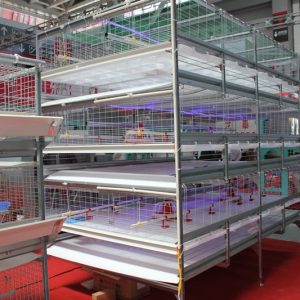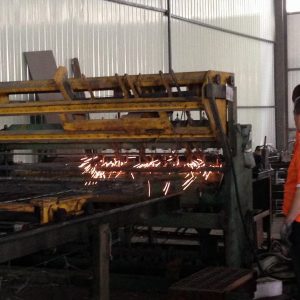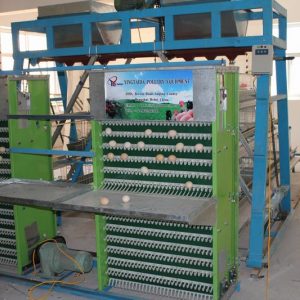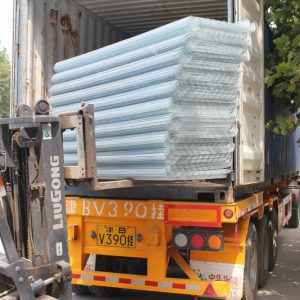
Full review of chicken breeding technical information
Technology is the main body of knowledge evolution. The experience, knowledge and skills in labor production also refer to other operational skills. Chicken breeding technology is a series of professional requirements and breeding skills required in the chicken industry. The chicken breeding technology information is used as the carrier and medium of chicken breeding technology to spread and guide the actual operation of the majority of chicken farmers. There are many types of chicken technology, with different focuses. Today, the global brand animal husbandry network is here to give you a full review of chicken breeding technology materials.
Chicken-raising technology originated from chicken-raising practices and research on various aspects of chickens. In terms of practice, according to the latest report from Xinhua News Agency, Chinese and German researchers reported on the 24th of this month that northern China was the first domestic chicken domesticated by humans. One of the areas in which chickens may have been raised as early as 11,000 years ago. Scientists use archaeological and molecular biological evidence to further prove that northern China is an important origin and earliest domestication place of modern domestic chickens. Domestication is one of the most primitive chicken-raising techniques, and it is the first skill in the chicken-raising industry. Today, with the development of society, the chicken-raising techniques summarized by scientific and technical personnel are very complicated. Let’s start with the main chicken-raising model.
1. Cage chicken
Cage raising means keeping chickens in cages. Cage breeding is suitable for young chickens, broilers, rearing chickens, laying hens and breeders. There are three main methods: stacked, flat and stepped. The stacked cage is used before 2 months of age, and the stepped cage is now used after 2 months of age. Cage chickens must be supplied with high-quality full-price compound feed, especially sufficient vitamins and trace minerals.
2. Fermentation bed chicken breeding technology
Traditional caged broiler chickens have a big fishy smell. Customers have long disliked it and avoided it. Fermentation bed chicken breeding is an effective and more reasonable ecological chicken breeding technology, which not only achieves the effective treatment of chicken manure, realizes zero emission, pollution-free, and odorless, but also provides healthy growth of chickens. The most suitable ecological environment.
The fermentation bed ecological and healthy breeding technology first started in a pig farm in Japan. It was a technology that needed to deal with the treatment of livestock and poultry manure. It was summarized and gradually improved by experts from relevant universities in Japan to form a basic and complete technical system. With the deepening of research in recent years, the original fermentation bed system has been continuously improved and perfected, and its application scope also ranges from large-scale pig farming to large-scale chicken farming. It was only in the 1990s in my country that trials and demonstrations of fermentation bed aquaculture technology were carried out in some provinces and cities, and it has been steadily promoted.
3. Technology of raising chickens in greenhouses
Chicken farming in plastic sheds is a new technology that has emerged in large-scale farming in rural China in recent years. Chicken farming in plastic sheds is a method of raising chickens with low investment, quick results and high returns. It is suitable for just starting to engage in chicken farming. , Applied to chicken farmers with poor economic conditions.
The technology of raising chickens in greenhouses has many advantages. It solves the problem of chicken breeding places for households with tight housing, economic difficulties, and large farmers, and broadens the channels for raising chickens. It is beneficial to returning farmland to the fields. As the greenhouses are ventilated and light, the air is fresh, which reduces the disease. The survival rate of the chicken is improved; the growth cycle of the chicken is shortened; the meat-to-feed ratio is increased; and the electricity consumption is saved. Since the design of the large shed is more reasonable, it is conducive to the adjustment of the temperature in the shed, so the electricity consumption can save more than 30% compared with indoor chicken breeding.
Four, bamboo forest chicken breeding technology
In recent years, some chicken farmers have contracted a bamboo forest to start raising chickens. What are the advantages of raising chickens in bamboo forests? There are three advantages to raising chickens in bamboo forests, reducing the cost of breeding: raising chickens under the bamboo forest, grass, bamboo leaves, insects are all The natural feed for chickens greatly reduces the cost of breeding; improves the quality of the products: the quality of chicken and eggs is significantly high, which is favored by consumers. They are very popular in the market, and the sales price is much higher than that of ordinary chickens, with an increase of about 3 yuan each; Increase bamboo shoot production. Chicken manure is scattered in the bamboo forest. It is a good organic fertilizer, and the production of bamboo shoots is increased by 13%.
Five, fly maggot chicken breeding technology
At the time of the epidemic in the chicken industry, if there is a chicken breeding model that can reduce the cost of breeding and improve the resistance of the chicken, then we will recommend the fly maggot chicken technology.
Fly larvae are rich in antibacterial peptides. The use of fly larvae in chickens can increase the anti-epidemic ability of the farm, save a large amount of medicine expenses, and greatly improve the production capacity of chickens. Feeding the chicks with fresh fly larvae significantly accelerates their growth and development, allowing laying hens to start production one month earlier. Each additional 1KG of fresh fly maggot feeding can increase the egg volume to 0.75KG, which can increase egg production by 20%. The rate of return increased significantly.
Regardless of the type of chicken raising technology, there will be some subtle differences in every link of the specific chicken raising technology. The general chicken raising technology information includes the breed and its production performance; the construction of the chicken house; Nutrition of commercial growing chickens; feeding management; control of common chicken diseases.
Chicken breed
The breeds of chickens are generally divided into laying hens, broilers and native chickens. The requirements for the selection of each breed are different. The following is a brief introduction. Laying hens are divided into brown, white and powder-shelled layers according to the color of the eggshells they lay. According to the weight of adult chickens, they are divided into light and medium types. Broilers are Avian and AA broilers. There are more varieties of native chickens, which are named after place names, such as silky chicken, Beijing chicken, Shouguang chicken, Jining chicken, Gushi chicken, Qingyuan chicken and so on.
In the choice of chicken breeds, we must comprehensively consider our own financial situation, market demand changes, seasonal changes, chicken growth cycle and growth environment requirements, etc., and find the most suitable one among many permutations and combinations to maximize the possibility. Reduce the risk of breeding.
Chicken house construction
In fact, there are no fixed requirements for the construction of chicken coops, but a few principles must be followed, so that the chicken coop constructed in this way can ensure that the chickens grow comfortable. The coop can be ventilated, and the coop must have front and rear windows and skylights that can be closed to facilitate Remove the heat, moisture and harmful gases in the house; it is conducive to cleaning and disinfection, preferably on the cement floor, in order to clean up chicken manure and disinfect. The location is appropriate and the topography is required. It can be thermally insulated. The chicken coop should be facing south, doors and windows can be closed tightly, walls should be seamless, ceilings should be set on the roof, and the single-layer tiled roof should be covered with straw to achieve thermal insulation in winter and summer. There is no accumulation of water in rainy days, and there is no pollution to air and water sources. It is best to build a new chicken house away from the residential area.
Feeding management
During the brooding period of chickens, consideration should be given to the aspects of humidity, ventilation, light, hygiene, observation of the group, density, accident prevention, feeding time, feeding time, drinking water and epidemic prevention.
In the process of chicken fattening and breeding, various factors must be adjusted in time according to the requirements of different seasons. Strengthening of breeding management in spring can achieve twice the result with half the effort. In addition to paying attention to the environmental sanitation of chicken coops and sports grounds, the content of protein, vitamins and minerals in the daily feed should also be increased to meet the needs of laying eggs.
The summer climate is hot, rainy, and humid. Chicken appetite decreases and egg production begins to decline. The central task of feeding and management is to ensure that heatstroke prevention and cooling work are done, and the environment is kept dry to maintain the appetite and egg production of the chickens. In autumn, the sunshine is getting shorter, and artificial lighting should be added in due course. The main reasons for the decrease in egg production in winter are low temperature and short light. Therefore, the focus of feeding management is to do a good job of heat preservation and increase light, so that the chickens can not stop production in winter and can maintain a high level of egg production.
Disease prevention
The prevention and control of diseases in chicken farms is the focus of the work of raising chickens. First of all, we must formulate specific implementation rules for sanitation and epidemic prevention, so that every breeder understands its importance, which is the guarantee for the epidemic prevention work.
Formulate effective immunization procedures, select high-quality vaccines, and adopt correct immunization methods. Immunization is to inoculate chickens with vaccines or vaccines in a certain way through a certain way, so that they can produce specific resistance without the disease, and thus have resistance to certain infectious diseases within a certain period of time. The immunity of chickens is divided into group immunity method and individual immunity method. No. 5 or No. 6 needles can be used for chicks to inject attenuated vaccines, No. 7 or No. 8 needles can be used for injections of oil vaccines; No. 9 needles can be used for adult chickens. The injection equipment and inoculation site should be strictly disinfected, otherwise it is easy to cause purulent infection.
Chicken raising technology has now become a relatively systematic and complete science, and it is still developing in a healthy manner. The technical information of chicken raising is provided to chicken farmers and chickens by telling different breeding modes, chicken disease prevention and control, and chicken breed selection. Technologists provide a window into this information.
Now that science is increasingly emphasized, it is also an era of increasingly relying on science to get rich. Chicken raising is no longer a sideline of the vast rural areas before, but will become a group, industrial, and large-scale development, and the intensive chicken raising model is highly dependent. Chicken breeding technology, from breeding chickens to hatching, from hatching to brooding, is full of chicken breeding technology in every step. At this moment, the theory that technology is productivity is being further confirmed in the vast breeding industry. The three groups of breeding, technology and wealth are in This era has come together. They are here for the peasants to get rid of poverty, but also for the realization of the great Chinese dream.



